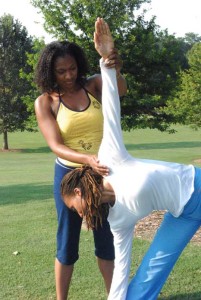Home Yoga Series #3
You’re ready to start a home yoga practice. You’re on your yoga mat - now what? Suddenly, you appreciate the challenge of coming up with a yoga sequence.
Yoga sequencing can be daunting when you first start a home practice. Fortunately, there are plenty of great resources on Youtube videos, Pinterest, and yoga blogs. Check out my home yoga flow for tight shoulders here. Another one of my favorite resources is Yoga Journal’s pose catalogue.
Online resources will definitely get you going. But be aware that not everything you find online about yoga is quality. I’ve shuddered at some of the poor form and sequencing I’ve seen.
Plus, if you always rely on sequences by others, you’ll miss out on a key benefit of a home yoga practice: tailoring your yoga flow to meet your needs. If you’re ever ready to design your own yoga flow, here are a few pointers on the art of yoga sequencing that I’ve learned from teaching yoga for a decade. Below is a high-level blueprint for a vinyasa (moving) style yoga sequence.
Yoga is meant to help you cultivate greater presence. That starts with being present for yourself. Before you jump into your yoga practice, take a few moments to center and come into the moment. Focusing on your breath is a great way to center.
Warm up your body. Opening sequences like Sun Salutation A and B are meant to warm up the body’s large muscle groups. Spend extra time on any muscles or area of the body you plan to focus on.
https://www.yogajournal.com/videos/salute-the-sun-modified
Now it’s time to flow through your yoga postures. Answering these three questions will help you come up with an intelligent flow.
1.What is your focus area?
Maybe it’s a certain part of the body like the back, shoulders, hamstrings or hips. You could also focus on a ‘pinnacle pose' – a challenging posture.
2.What parts of the body do you need to stretch or open up?
Say you’re focusing on back bends and your pinnacle pose is Dhanurasana (Bow Pose). You need to stretch your back, shoulders, abdomen, and hip flexors. Incorporate postures into your flow that will stretch these areas.
3.What parts of the body do you need to strengthen?
In addition to stretching, you may also need to strengthen certain muscles to properly perform a yoga posture. Dhanurasana requires both a flexible and strong back.
Go Deep
Towards the end of your practice after you’ve thoroughly warmed and stretched your body, incorporate a few deep, longer held stretches. Take this time to really tune into your body, noticing how it feels now versus when you first started. Remember, yoga is not just about postures, but building awareness.
Tune In
At home, it may be tempting to skip Svasana or corpse pose-the final posture of your yoga practice. Svasana is an essential posture because it gives you a moment to integrate and relax. How often do you do make time to let go and process? Not often enough for most of us which is why Svasana is so important.



